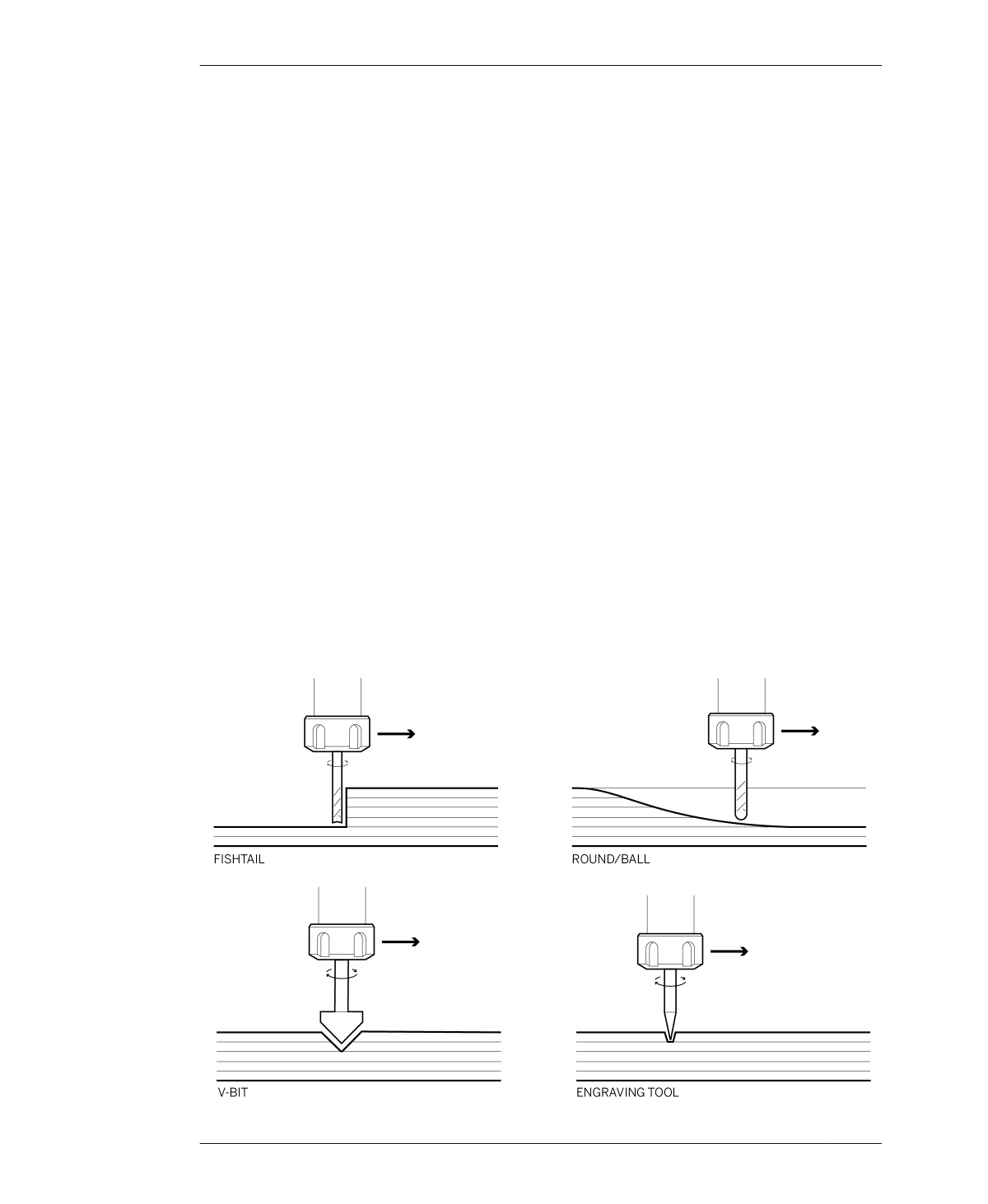
FIGURE 6-6
Tool end types
END-MILL GEOMETRIES
END-MILL GEOMETRIES
Pairing your material and machine setup with
the proper tool is vital, but it can be a challenge;
there are an immense variety of cutter types
and shapes available for every conceivable
material and cut type. But don’t worry, we’ll
walk you through the basic principles and tool
types—and provide tool recommendations for
routing plywood with part numbers and suppli-
ers to get you started.
END TYPES
End mills for machining wood have two basic
end types: those that are able to plunge
straight into material, and those with flattened
end flutes that must be ramped in.
Standard/Plunge End
These tools are sometimes called fishtail or
swallow tail end mills, due to the indentation at
the end of the tool. These tools work well for
both profile and pocket cutting. For profile cuts,
it produces a completely flat edge surface. For
pockets, it leaves a clean, 90-degree angle
between the side and the bottom, and gives the
bottom of the pocket a flat surface (for further
details, see “Pockets” on page 158).
Finish/Flat End
The fishtail-style plunge end mill can leave tool-
mark scratches in the bottom of a pocket,
which can be eliminated by using a finish or flat
end mill (FEM), which must be ramped into the
cut due to its much flatter end.
Ball-nose
A ball-nose end mill has helical flutes and a
round end, which is best for contour cutting,
and is capable of creating topographic smooth-
ness because its ball end makes minimal con-
tact with curved surfaces.
V-Bit
A v-bit has an angled tip that carves a deep v-
shaped groove into the material surface. Typi-
cally the sharp bottom of a v-bit is aligned with
the toolpath, making it ideal for v-carving, or
cutting decorative details with a three-
dimensional effect without the need for an
actual 3D model. V-bits come in a variety of
152
DESIGN FOR CNC
